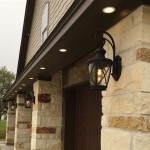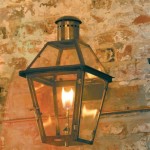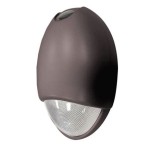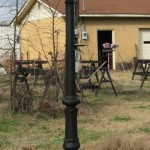How to Paint Concrete Outdoors
Painting concrete outdoors can transform a drab patio, driveway, or walkway into a vibrant and stylish space. Whether you're refreshing an existing surface or covering fresh concrete, the process is relatively straightforward with the right preparation and materials. This guide will explain how to paint concrete outdoors, from choosing the right paint to applying it professionally.
1. Preparation is Key
The success of any painting project hinges on proper preparation. Concrete surfaces require specific steps to ensure the paint adheres correctly and lasts longer.
Cleaning: Start by thoroughly cleaning the concrete surface using a pressure washer or a stiff-bristled brush and a solution of water and detergent. Remove any dirt, debris, oil, or grease that could interfere with paint adhesion. Allow the surface to dry completely before proceeding.
Repairing: Inspect the concrete for any cracks, holes, or imperfections. Repair these using a concrete patching compound or epoxy filler. Let the repair material cure completely before painting.
Priming: Priming the concrete surface creates a bonding layer for the paint, improving its adhesion and durability. Choose a primer specifically designed for concrete, available in different formulas depending on the existing surface. Apply the primer evenly with a roller or brush, allowing it to dry thoroughly before proceeding to the next step.
2. Choosing the Right Paint
The type of paint you choose depends on the intended use of the concrete surface and the desired finish. Explore these options:
Epoxy paint: This highly durable paint is excellent for high-traffic areas like driveways and garages. Epoxy paint forms a tough, chemical-resistant coating that withstands abrasion and stains.
Acrylic paint: Acrylic paints are water-based and offer a smooth, even finish suitable for patios, walkways, and other moderate-use areas. They are typically easier to apply than epoxy paints and come in a wide array of colors.
Latex paint: Latex paint is a popular choice for concrete surfaces due to its breathability, allowing moisture to escape and preventing blistering. It is also easy to clean up with soap and water. However, latex paint may not be as durable as epoxy or acrylic paints.
Consider the following factors when selecting your paint:
Traffic: For high-traffic areas, choose more durable paints like epoxy or acrylic.
Weather exposure: Opt for paints with UV protection and water resistance for outdoor areas exposed to sun and rain.
Color: Select a color that complements your existing landscaping and architecture.
3. Applying the Paint
With the surface prepared and the paint chosen, you're ready for the application process.
Equipment: You'll need the following tools:
- Paint roller
- Paintbrush
- Paint tray
- Painter's tape
- Protective gear (gloves, mask, and eye protection)
Application:
1.
Use painter's tape to mask off any areas you do not want to paint.
2.
Pour the paint into the paint tray and roll it onto the roller.
3.
Apply the paint evenly in thin, overlapping coats.
Avoid applying thick coats, as they may take longer to dry and crack.4.
Use a brush to paint around edges, corners, and areas inaccessible to the roller.
5.
Allow each coat to dry completely before applying the next.
Drying time varies depending on the type of paint and weather conditions.6.
Remove the painter's tape after the final coat has dried.
7.
After applying the final coat, allow the paint to cure thoroughly before using the surface.
This can take several days, depending on the type of paint and the weather conditions.Tips for a Professional Finish:
- Work in small sections to avoid the paint drying too quickly.
- Use smooth, even strokes to prevent streaks and brush marks.
- Roll the paint in the same direction for a consistent finish.
- Clean your tools immediately after use to prevent paint from hardening.
By following these steps and paying attention to detail, you can achieve a professional-looking finish that will enhance the appearance and longevity of your outdoor concrete surfaces.

How To Paint A Concrete Porch Or Patio

How To Paint A Porch Floor With Concrete The Honeycomb Home

Backyard Makeover How To Paint Concrete Look Like Oversize Pavers A House Full Of Sunshine

Before And After Painted Concrete Patio Thistlewood Farm
:max_bytes(150000):strip_icc()/faux-painted-rug2-5d0d2b1a8ddd4c60a39ffd329840874e.jpg?strip=all)
15 Painted Concrete Patio Designs

How To Paint A Concrete Patio Exquisitely Unremarkable

The Solution To Decorating Concrete Patios Porches
:max_bytes(150000):strip_icc()/cement-tile-1-of-1-683x1024-f5a283b105e04abf8729e7390f9148bc.jpg?strip=all)
15 Painted Concrete Patio Designs

Painted Concrete Slab And Brick Pavers One Year Later So Much Better With Age

Everything You Need To Know About Exterior Concrete Paint
Related Posts







